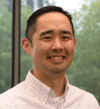
Three Lessons from the World’s Hardest Examination
Last week, 640,621 high school seniors took the Korean university entrance exam, officially translated into English as the “Collegiate Scholastic Ability Test.” Let me give you a little insight into the life of a high school senior in South Korea.
How Serious Is This Exam?
Businesses, government agencies, even the Korean stock exchange deliberately open later to ease commuting traffic for these students. If you are running late, you can call 911 for a personal police escort to your exam center. Traffic is strictly prohibited within 200 yards of any testing centers, and each of these centers is patrolled by police forces to prevent unnecessary disturbances to the test takers. Seoul airports do not allow takeoffs or landings between 1:10pm and 1:25pm to minimize noise levels for the listening comprehension section.
“Underclass Students Cheer the Seniors on the Day before the Big Exam”
What material does it cover?
The American SAT has only three sections: quantitative, verbal and writing. The Korean CSAT has twenty sections:
- Korean Literature
- Korean Reading
- Korean Grammar
- Korean Speech and Writing
- Basic and Integral Calculus
- Statistics, Geometry and Vectors
- English Language including listening portions
- Ethics and Thought
- Korean History
- World History
- East Asian History
- Korean Geography
- World Geography
- Law
- Politics
- Economics
- 2 Science sections (choose two between Physics, Chemistry, Biology, Earth Science)
- Vocation
- Second foreign language (though some students may choose to opt for questions on written Chinese. Slackers! Or should I say 敷衍取巧者?)
How long is the test?
The test takes roughly nine hours. For the American equivalent, imagine yourself as a high school senior taking the SAT. As soon as you finish the three-hour exam, you immediately take another version of the ENTIRE TEST an additional two times.
Is there a makeup exam?
Sure! The CSAT generously provides a makeup test for students who perform poorly. It is administered at the same time, but in the next year! In fact, one out of every five students will retake the test with the hopes of exchanging another year of tortuous preparation for a better score. Korean students were doing the “gap year” long before it was cool. There’s even terminology for those who take a “gap year.”
Curating this blog on best practices in teaching theology and religion, it’s easy to think about everything wrong with the Korean Collegiate Scholastic Ability Test. But what does this exam do right? Of course, I never had to take this exam, but I came up with three positive takeaways.
1. Great Expectations
I do appreciate the idea that the makers of this test had high expectations for the 620,000 students. From another perspective, I don’t think that the phrase, “This may be too hard,” has ever been spoken within the Korean Ministry of Education. I realize that excellence is not limited to test performance. But do I design and teach each class with the expectation that every single student could be tested, stretched, and pushed to learn more than they thought possible?
2. Efficiency
One thing about multiple choice tests is that they are efficient to grade. Students get their scores in one week. Heavy loads? Overcommitment to service projects? Too many research deadlines? Sometimes, we sabotage ourselves with elaborate assignments and assessment tools that become too overbearing for us to manage. Our time is a bank, not a limitless well. I’m speaking to everyone but especially those with a 4/4 teaching load or worse. No one in administration wants to see you burn out. Personally, I have never given a multiple-choice test. But I do carefully consider the time requirements to grade the assignments/exams in my courses.
3. Teaching Fundamentals
I like how the Korean exam focuses on the core subjects. With the economic pressures of attracting majors and designing new curriculums, I hope that we can continue to emphasize foundational skills that allow for transformation in line with our institutional mission.
I’m pleased to hear that the Korean government recognizes the problem of this system, and they are looking to reform the criteria for university admission. Perhaps that is the best lesson for theological and religious studies educators from the world’s hardest exam: self-reflection and adjustments are crucial to an effective learning process.
[Author’s note: I am grateful to Jin Young Choi of Colgate Rochester Crozer Divinity School and SungUk Lim of Vanderbilt University for their personal insight on taking this entrance exam. Let’s just say that they agree with the title.]


